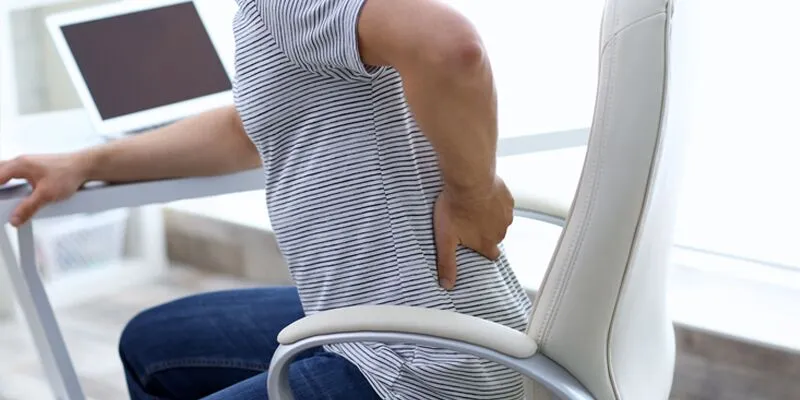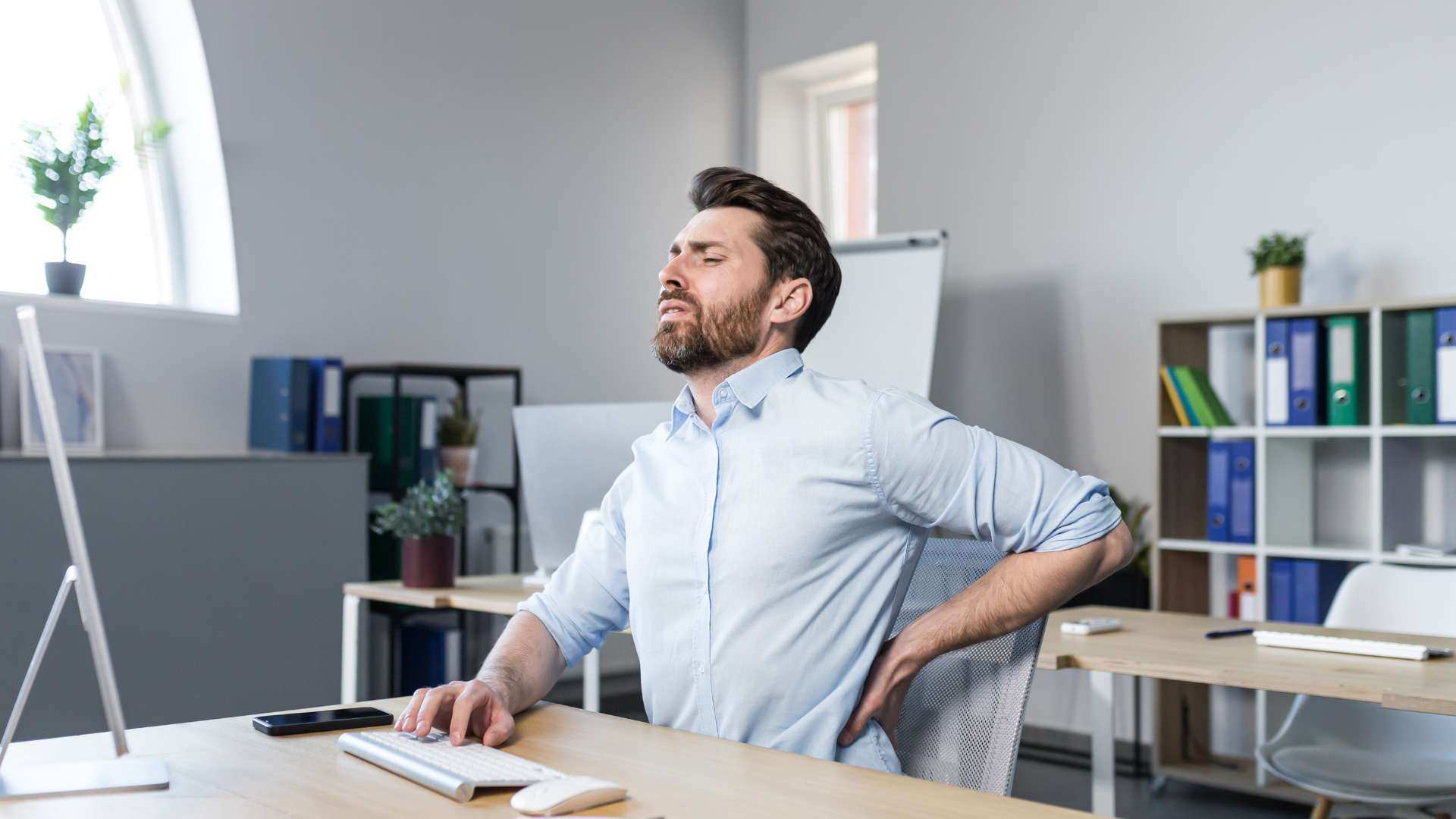Pudendal neuralgia is a painful condition that develops when the pudendal nerve, which controls sensation in the pelvic region, becomes irritated or compressed. Prolonged sitting, especially in office or desk jobs where movement is limited, is one of the main triggers. What often starts as mild tingling, pressure, or burning while seated can gradually progress into persistent pain that disrupts both work and daily life. Recognizing these signs early is important to prevent the condition from becoming chronic and more difficult to manage.
Recommended: Are Bike Seats Causing Numbness in My Genitals?
In this blog, we’ll explore the key signs of pudendal neuralgia that can develop from sitting too long at work.
Understanding Pudendal Neuralgia
Pudendal neuralgia is a type of chronic pelvic pain caused by irritation, inflammation, or compression of the pudendal nerve. This nerve runs from the lower spine through the pelvic area and supplies sensation to regions such as the genitals, anus, and perineum. When it becomes compressed, often due to sitting for long hours, poor posture, or constant pressure on the pelvis, it can trigger pain that feels sharp, burning, or tingling. Unlike temporary discomfort from sitting, pudendal neuralgia tends to persist and may worsen over time if not addressed.

Because its symptoms often resemble other conditions like sciatica, urinary tract problems, or hemorrhoids, it is frequently overlooked or misdiagnosed. Understanding how this nerve functions and why it becomes irritated is the first step in recognizing the early signs and seeking proper care.
Early Warning Signs of Pudendal Neuralgia You Shouldn’t Ignore
1. Burning or Tingling Sensation
One of the earliest signs of pudendal neuralgia is a burning or tingling feeling in the pelvic area. It often appears while sitting and may ease once you stand or change position. Many people dismiss this at first, but it can be an early indicator of nerve irritation.
Recommended: Will Pelvic Floor Therapy Help with Hard Flaccid?
2. Numbness or Loss of Sensation
Some notice patches of numbness in areas such as the buttocks, genitals, or perineum. It may feel as if the area has “fallen asleep” after sitting too long, which suggests the pudendal nerve is under pressure.
3. Sharp or Stabbing Pain
In certain cases, the discomfort presents as sudden, stabbing pain in the pelvic region. These jolts can be brief but recurring, and they often point to nerve compression that should not be ignored.
4. Pressure or Fullness in the Pelvic Region
A sense of heaviness, fullness, or unusual pressure in the pelvic area is another warning sign. This sensation tends to worsen the longer you remain seated, especially on hard surfaces.
5. Pain that Improves When Standing
A classic sign of pudendal neuralgia is pain that intensifies while sitting but improves when standing or lying down. This relief from changing posture is a strong indicator of nerve involvement.
6. Discomfort During Daily Activities
Simple activities like sitting at a desk, driving, or cycling can trigger pelvic pain. When routine movements start causing discomfort, it is often a sign that the pudendal nerve is being irritated by prolonged pressure.
Common Symptoms Experienced at Work
1. Increasing Discomfort While Sitting

Many workers notice that pain or burning intensifies the longer they remain seated at their desks. The discomfort may start as mild but can grow stronger as the workday progresses.
Recommended: Is Treatment for Pelvic Congestion Syndrome Available in Nigeria?
2. Difficulty Staying Focused
Persistent pelvic pain can make it hard to concentrate on tasks. Instead of focusing on work, the mind shifts toward the constant discomfort, leading to reduced productivity.
3. Frequent Shifting or Adjusting in the Chair
Employees with pudendal neuralgia often find themselves changing positions, leaning to one side, or standing up often to relieve pressure on the pelvis. This restless behavior is a clear sign of underlying nerve pain.
4. Relief When Standing or Walking
A common workplace symptom is pain that eases after standing up, stretching, or taking a short walk. This pattern strongly indicates that sitting is the main trigger for the nerve irritation.
5. Pain During Commutes or Meetings
Long commutes, extended meetings, or any situation that requires prolonged sitting can cause flare-ups. Workers may start to dread these activities because of the discomfort they bring.
6. Emotional Strain at Work
Living with constant pelvic pain can also take a toll on emotional well-being. Frustration, stress, and irritability are common when the pain interferes with daily responsibilities.
Pain Patterns and Triggers of Pudendal Neuralgia
Pudendal neuralgia does not always present the same way for everyone. The pain often follows certain patterns and is linked to specific triggers that make the condition worse. Recognizing these patterns can help distinguish pudendal neuralgia from ordinary discomfort caused by sitting too long.
1. Pain That Worsens With Prolonged Sitting
The most consistent pattern is pain that increases the longer you remain seated. Even cushioned chairs may not provide relief, and the discomfort builds gradually over time.
2. Pain That Improves When Standing or Lying Down
Many people with pudendal neuralgia experience noticeable relief when they stand up or lie flat. This change in posture reduces pressure on the pudendal nerve, confirming that sitting is the main trigger.
3. Discomfort From Hard Surfaces
Sitting on firm or hard surfaces, such as office chairs without proper padding, tends to intensify the pain. This happens because the pelvic area bears more direct pressure.
Recommended: How Effective is Pelvic Floor Therapy For Vaginismus?
4. Flare-Ups During Certain Activities

Cycling, driving long distances, or even sitting through extended meetings can trigger sudden flare-ups of pain. These activities share one factor in common: prolonged pressure on the pelvis.
5. Pain That Shifts or Radiates
Some people notice that the pain is not always in the same spot. It may move between the buttocks, perineum, or genital area, which makes it harder to identify at first.
6. Evening or End-of-Day Discomfort
For office workers, pain is often more noticeable later in the day after hours of sitting. This gradual build-up is a key pattern linked to nerve irritation.
Lifestyle and Workplace Factors that Contribute
Pudendal neuralgia is not always caused by sitting alone. Certain lifestyle habits and workplace conditions can increase the risk of irritating or compressing the pudendal nerve. Understanding these contributing factors can help you make adjustments that reduce strain on the pelvic area.
1. Prolonged Sitting Without Breaks
Remaining seated for hours at a time places constant pressure on the pudendal nerve. Many office jobs encourage this habit, especially when deadlines are tight.
2. Poor Ergonomic Setup
Using chairs that lack proper cushioning or desks that are too high or low can force poor posture. This creates unnecessary pressure on the lower spine and pelvic region.
3. Sedentary Lifestyle Outside Work
Going from a desk job to long hours of sitting at home, such as watching TV or gaming, adds to the overall strain on the pudendal nerve.
Recommended: How Do Pelvic Floor and Core-Focused Routines Benefit Postpartum Recovery?
4. High-Impact or Repetitive Activities
Activities like cycling or weightlifting, especially without proper technique, can put added stress on the pelvic area and worsen nerve irritation.
5. Stress and Muscle Tension
Chronic stress can lead to tightness in the pelvic floor muscles, which may compress the pudendal nerve and increase pain.
6. Lack of Movement During the Workday
Skipping stretching or short walks during breaks prevents circulation from improving in the pelvic area, making symptoms worse over time.
Simple Preventive Tips While at Work
While pudendal neuralgia can be challenging, small changes in your work routine can make a big difference. Taking proactive steps throughout the day helps reduce pressure on the pudendal nerve and lowers the risk of pain becoming chronic.
1. Take short breaks every hour to stand, stretch, or walk, which helps ease pressure on the pelvis and improve circulation.

2. Use an ergonomic chair or a cushion designed to reduce pelvic strain so that your body has proper support throughout the day.
3. Adjust your desk setup so your screen is at eye level, your arms rest comfortably, and your feet remain flat on the floor to encourage better posture.
4. Incorporate gentle stretches for your lower back, hips, and pelvic area during breaks to keep muscles flexible and reduce stiffness.
Recommended: Can Kegels Help With Hemorrhoids?
5. Switch between sitting and standing positions throughout the day, and if possible, use a sit-stand desk to prevent prolonged pressure on the pudendal nerve.
6. Stay mindful of your posture by avoiding slouching, leaning forward too much, or crossing your legs for long periods.
7. Drink enough water to stay hydrated, which naturally encourages you to take breaks for refills and restroom visits, keeping you active.
8. Shift your weight frequently while sitting, rather than staying in one rigid position for hours.
9. Take phone calls while standing or walking to add natural movement into your workday.
10. Organize occasional walking meetings or step outside briefly to break up long sitting sessions and promote circulation.
Conclusion
Pudendal neuralgia is a condition that often develops quietly but can have a serious impact on comfort and productivity if ignored. Long hours of sitting at work place constant strain on the pelvic region, and what starts as mild tingling or burning can progress into persistent pain that affects daily life. Recognizing the early signs, understanding the pain patterns, and being aware of contributing workplace habits are key steps toward protecting your health. By making simple adjustments such as improving posture, taking regular breaks, and using ergonomic support, you can significantly reduce the risk of nerve irritation.
If symptoms persist despite these efforts, seeking medical advice is essential. Taking action early not only helps prevent long-term complications but also ensures you can work more comfortably and maintain a healthier lifestyle.
